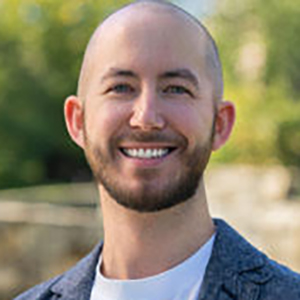
I first started with Adobe Photoshop back in 2002 as a way to get involved in the online gaming community. I created forum signatures for various community users. This led me to immerse myself in design and it was the primary skill I brought into college as a first generation college student. I was undeclared the first two years, then ultimately decided [on an undergrad degree in New Media Design and Imaging at Rochester Institute of Technoloyg] because of the photoshop skills I built in high school. This had a ripple effect which led me into other fields such as video editing, XR access, and new media marketing.
My objective is to improve the overall design and user experience for the accessibility community. I am driven to make a positive impact in accessibility and universal design by enhancing the experiences of the community as a whole. I will use my design and accessible human computer interaction degrees to consult on products and contribute to the access and usability of products. I plan to focus on emerging technologies to ensure accessibility features are built in from the beginning, breaking the cycle of accessibility as an afterthought. I have been involved in several startups, ranging from VibeAid, a vibrating vest that notifies permanently or temporarily deaf people about approaching objects from behind using LiDar technology, to Waivo, a sound recognition company that focuses on sound detection in homes. I have an innovative and entrepreneurial mindset and strive to modernize accessible technology.
I was born with profound hearing loss, and am deaf. I did not have any role models in technical fields that were also deaf. The first role model that pivoted my career goals was Wayne Betts, a deaf film-maker and entrepreneur, who I learned about in my first year of University at RIT/NTID. I attended RIT because of the National Technical Institute for the Deaf (NTID), and because of that, I immersed myself in leadership, clubs, start-up business, and Greek life. All these activities shaped me and my confidence to tackle the world, regardless of my deafness. Because of the experience I gained in University, I had an opportunity to work at one of the world's largest deaf social impact organizations, Communication Service of the Deaf. Sign language is the primary communication in the organization, and I was honored to work there for four years as their Digital Media Strategist.
If you’d like to pursue human computer interaction or design, I’d strongly recommend practicing problem solving on a daily basis. This can take form in ways of just thinking of the user experience in everything you do. When you walk through the front door of your school, are there barriers for wheelchairs to pass through? When you sit down at the table in the cafeteria, are the tables that accommodate various disabilities? When you use an app on your phone or computer, is all spoken content understandable? This act of exercising your brain is essential to develop a holistic understanding and views of current barriers and how they can be solved. This is an essential part of human computer interaction.
Information is democratizing. People who have computing skills can contribute to the access of centuries of collected information. Before computing, powerful corporations and the government served as gatekeepers to information, but today, information is in the power of our hands. There is nothing more empowering than contributing to efforts to provide public access to knowledge and entertainment. It is also our ethical responsibility to create a more inclusive and equitable world for future generations to come. Computing careers can provide that.